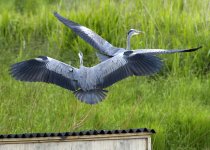I presume they must be all yearly (resident) species as I am sure they would put migrants in the review I think
Kind Regards
BCB
The monthly summary reports try to pick out the highlights rather than a verbotum list of birds seen; as a wetland reserve numbers of wildfowl, gulls and waders are all carefully monitored, together with any arrival departure dates and notable counts, breeding success or other interesting behaviour or unusual occurences.
There are probably around 50 species that occur every month (albeit in variable numbers) - at a stab these will include Mute Swan, Canada Goose, Greylag Goose, Mallard, Tufted D, Coot, Moorhen, Water Rail, Cormorant, Grey Heron, GC Grebe, Little Grebe, LBB Gull, BH Gull, Herring Gull, Lapwing, Curlew, Buzzard, Kestrel, Sparrowhawk, Peregrine, Pheasant, Wood Pigeon, Stock Dove, Collared Dove, Feral Pigeon, Green Woodpecker, GS Woodpecker, Kingfisher, Treecreeper, Pied Wagtail, Blackbird, Song Thrush, Starling, Blue Tit, Great Tit, LT Tit, Robin, Dunnock, Wren, Jay, Jackdaw, Carrion Crow, Magpie, Chaffinch, Greenfinch, Bullfinch, Goldfinch, Linnet, Reed Bunting.






